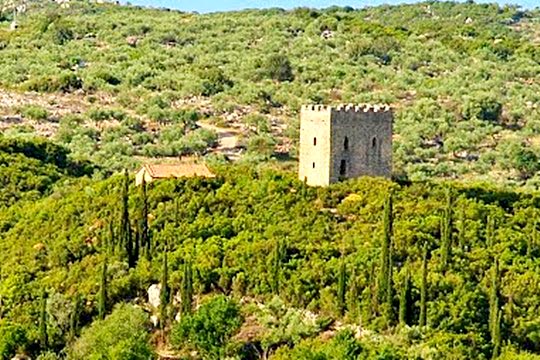Did you Know?
The Home of Sir Patrick Leigh Fermor
Kazantzakis is not the only author to be inspired by our little bit of paradise that is Mani. Just past Stoupa in the village of Kalamitsi bay once resided Sir Patrick Leigh Fermor, an author, scholar and decorated soldier, he was celebrated as the finest travel writer of his generation. Traveling throughout Europe documenting his journey Leigh Fermor enlisted in the army as soon as he heard that England declared war on Germany in 1939. Due to his knowledge of Greek, he helped co-ordinate the resistance in Crete against the Germany occupation. Most famed for his involvement in the capture of German commander General Heinrich Kreipe, Fermor went on to write a series of books about his travels. This included “Mani” and “Roumeli”, which detailed his trips in and around the remote parts of Greece. Receiving his knighthood in 2004 Leigh Fermor also received an honor from the Greek Government making him a Commander of the Order of the Phoenix.
“In 1996 Patrick and Joan Leigh Fermor bequeathed their home in Kardamili to the Benaki Museum with the intention that the house’s ownership would be transferred to the Museum after their death. According to the expressed desire of the Leigh Fermor’s and the donation contract, the house can be used to host intellectuals and scholars (writers, researchers, artists, poets, etc.) who are looking for a quiet and hospitable place to work.”
For more information about the Home and the Museums feature please see: https://www.benaki.gr under “The House of Fermor”

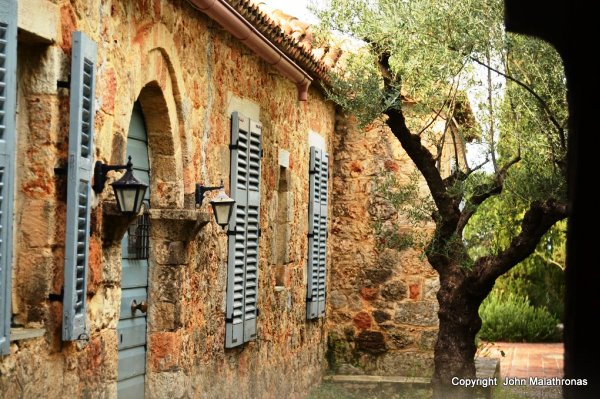
Machaon and Koumoundouros in Kambos
On your way to Kalamata, just on the outskirts of the village Kambos, stands what’s left of a great two-story tower that belongs to Alexandros Koumoundouros, a well-known Maniate whom served as Prime Minister of Greece ten times. Koumoundouros’ greatest achievement came in 1881 during his last premiership, after diplomatic contacts with Turkey and the Great Forces, he managed to bring about the annexation of areas Thessaly and Arta to the Greek mainland.
Not too far from this tower lies the Tomb of Machaon, son of Asclepius and the first military doctor in history, mentioned in Homer’s Iliad. He took part in the Trojan War, and was revered as a brave warrior and outstanding surgeon. Also, was known to be taught the different medicinal uses of herbs by Chiron the Centaur. When killed in the tenth year of the War his remains were brought to Gerenia (Kambos) and buried with great honor by Nestor King of Pylos, and worshipped by the people. His tomb was thought to have mystic healing powers and the local would often go there to seek help.
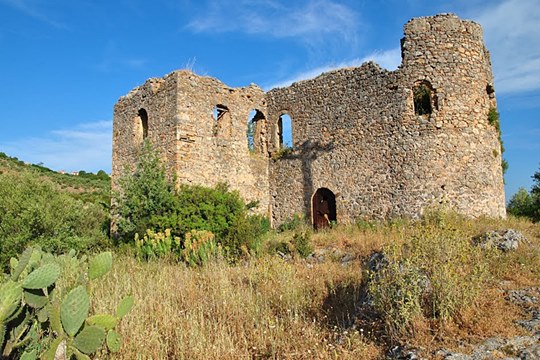
Name Origins of Stoupa and Kalogria
All Greek names have an origin, whether it’s biblical, historical or just circumstantial every name you come across has a reason for being. This includes our local villages, fielded areas and beaches; Stoupa (Στουπα) is derived from the word Stoupia (Στουπιά) meaning retted flax fiber. Stoupa once was an area where flax and linseed was grown, cultivated and processed using the waters on Stoupa beach. When matured, the flax was collected and brought down the shore in bundles where they were soaked, the seeds were kept for the next harvest and the bundles, once softened, where brought into the home to be beaten with wooden tools until the stem splintered enough to extract the fibers. They were combed using a wooden board with erected nails, in a similar technique to that of combing wool. These fibers are two to three times as strong as those of cotton and could be used to make textiles such as linen, traditionally used for bed sheets, underclothes, and tablecloths. Coarser grades were used for the making of twine, rope and webbing equipment i.e. fishing nets.
The origin story of Kalogria’s name is much shorter and sweet, the word Kalogria (Καλóγρια) means nun. Approximately over 100 years ago, a nun had resided in one of the small houses on Kalogria beach. Consequently, if anyone was on their way to see the nun and someone had asked them where they were headed, they would simply reply “to the nun” (“στην καλóγρια”). After years of the nun residing there the name simply stuck, even after she had left the name has never been changed since.
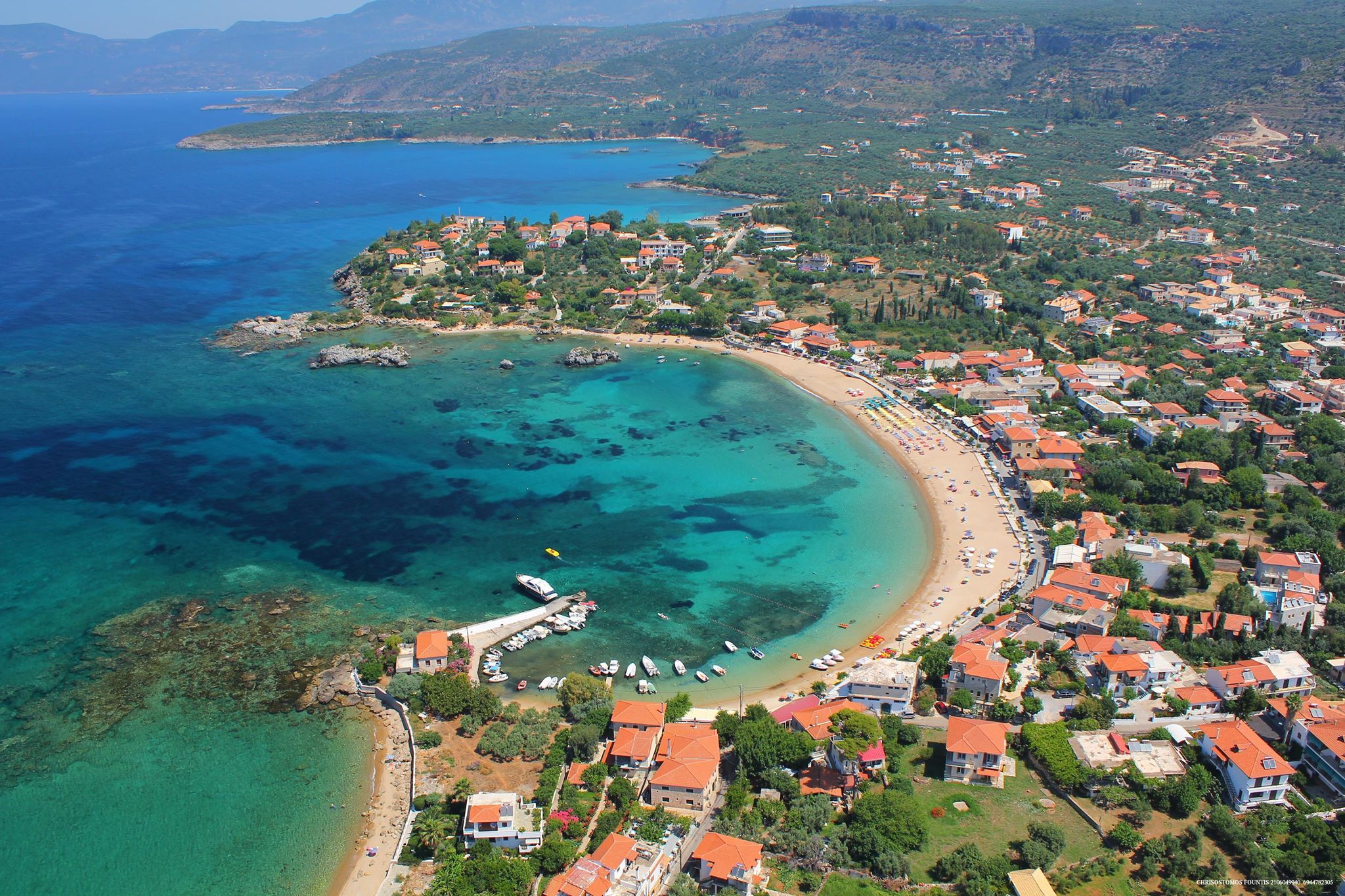
Mystery Springs
Not too far off shore from Kalogria and Stoupa beach, lies a series of underwater springs that keep water fresh and cool. One of these springs expels up to 100,000 cubic meters of fresh water every 24 hours. The spring’s location can be seen from shore due to its smooth appearance on the water’s surface. The water within the area is a temperature of 10 degrees Celsius and its flow rate changes seasonally. Some believe that its source of water comes from the mountain Taygetos, however, through various tests there is no evidence to this being true. The depth of the crater created by the largest spring is 25 meters. If you wish to see this natural wonder you can be a part of a dive excursion organized by our local Dive Center, Dive Code.
For more information see;
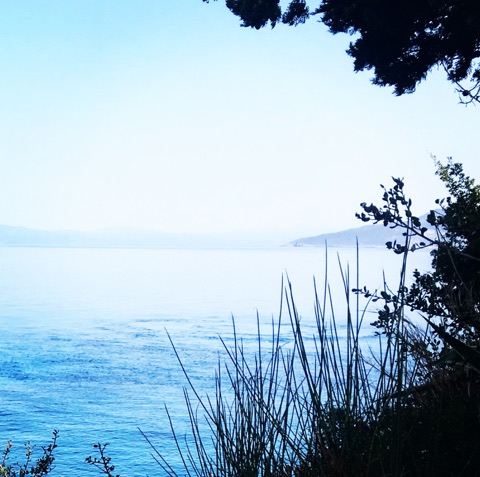
Beaufort
One of the many features of Stoupa is the small acropolis that stands in its Southeast. Now called the Kastro (castle) after the structure built there by William (Guillaume) de Villehardouin in 1252 following the conquest of the Peloponnese by the Franks. Having a perimeter of 300 meters and being egg-shaped it stood out due to its unique architecture and good defense. It was also known as Beaufort (Beautiful Fort), however, very little remains of the structure except for a few walls and the remnants of a tower on the summit. It is also believed to have been built on an ancient temple of Athena owing to the discovery of a carved marble head of Athena found on the grounds. In 1262 this structure was given to the Byzantines in exchange for Guillaume’s return from capture during the war. The Byzantines then destroyed this fortress along with others to not only weaken any defense the Greeks had against them but to discourage any thought of rebellion.

The First Families of Stoupa
After a feud with the Koumoundouros clan in the end of the 18th century, the four sons of Mavrikos that of Mavrikos tower in Stavropigio moved to our area of Stoupa. Their new family names were then adopted deriving from the name of each son; Giannis to Giannoulea, George to Georgilea, Theodor Theodorakea and lastly Barbitsiotis to Barbetseas. The descendants of these families still reside in Stoupa and its surrounding areas.
